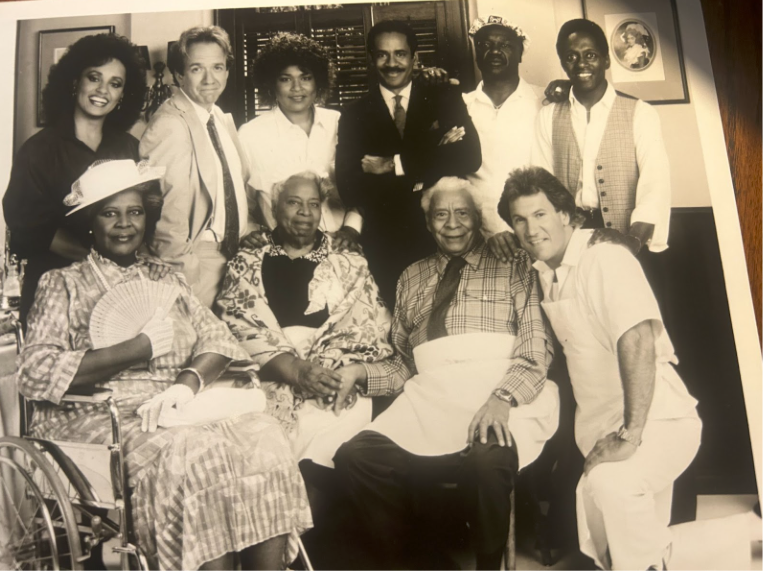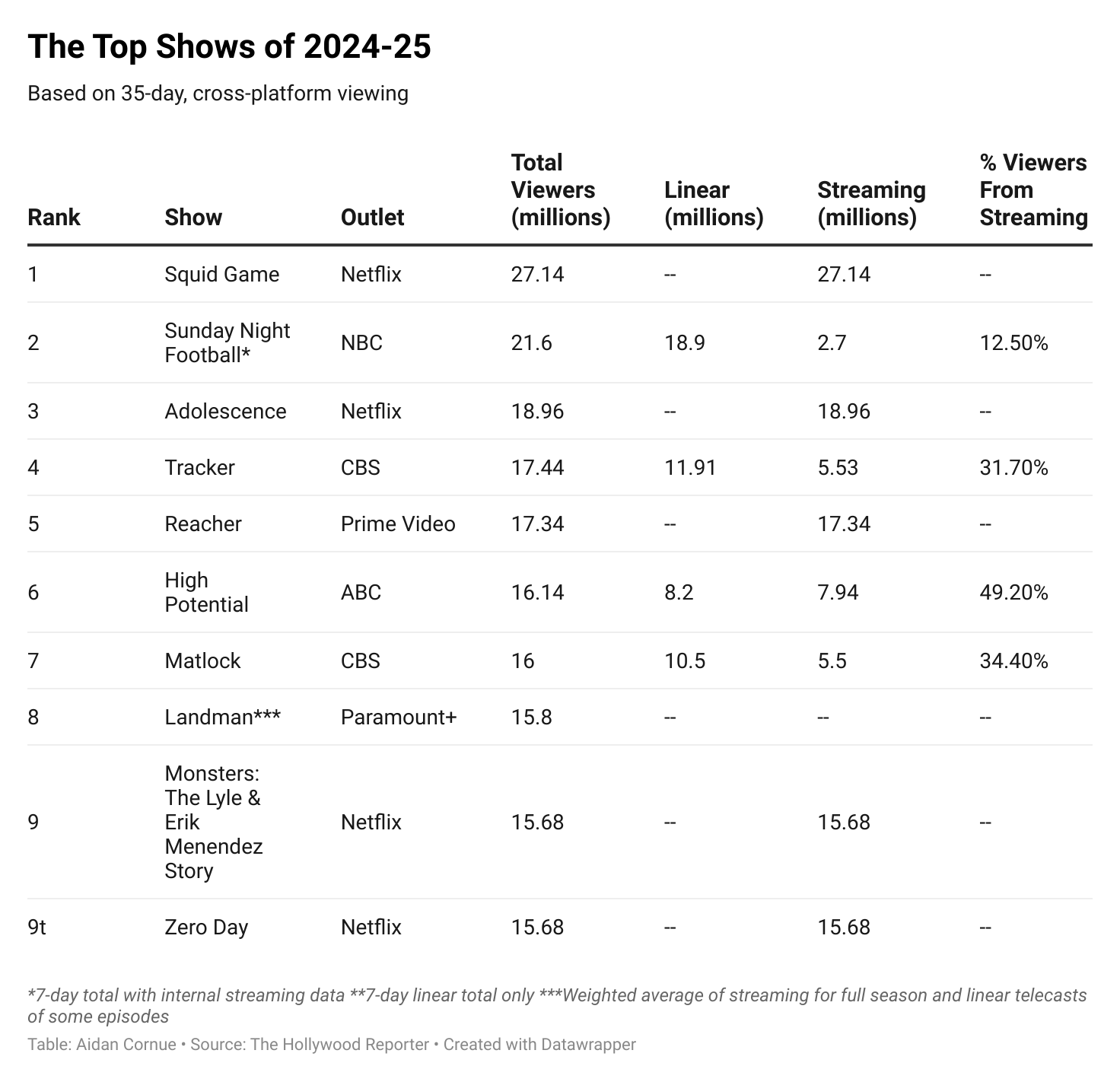Media Matters: New Orleans and the Emmys
The broadcast networks – ABC, CBS, Fox and NBC – perform poorly in the Emmys these days, yet the awards show is still hosted each year by one of the Big Four.

Earlier this month I was in New Orleans with Aidan, our editor. Our paper was a finalist for a national Startup of the Year award from the Institute for Nonprofit News (INN). We didn’t win, but given that there were more than 200 startups in the last two years – 80% of them digital only – the Oxford Free Press was honored to finish in the top three.
New Orleans always recalls the ground-breaking sitcom “Frank’s Place” and the Emmys, another recent awards ceremony. It lost the Best Comedy Emmy that season to “The Wonder Years” (ABC, 1988-93), a coming-of-age sitcom. CBS cancelled “Frank’s Place” (CBS, 1987-88) for low ratings. Both these shows were considered “dramedies” – sitcoms that also dealt with serious issues. They were shot like films, with one camera, instead of the traditional 3-camera studio set-up. No live audiences or laugh tracks for either show.
“Frank’s Place” was developed by Hugh Wilson, who had earlier created the Emmy-winning “WKRP in Cincinnati” (CBS, 1978-82). Howard Hesseman and Tim Reid played unruly DJs on the sitcom. Tim Reid would go on to star as Frank Parrish in “Frank’s Place” – on one level, a comedy about a Renaissance history professor who gives up an academic life in Boston after his father dies and leaves him a restaurant in New Orleans. On a deeper level, it was a drama about work, community, race and history.
After “Frank’s Place” was cancelled, a colleague and I, assistant professors at the University of Michigan at the time, hosted a panel in 1988 at a media conference in New Orleans about the show’s creation and demise. We invited Hugh Wilson, who came from LA and hosted 15 academics for lunch at Chez Helene, the restaurant that served as the model for the sitcom. Later, for an article, I did a telephone interview with Tim Reid, who co-produced the program with Wilson. The show had started strong in the ratings but got moved around so many times by CBS that Wilson and Reid’s own mothers couldn’t find it in the schedule. “Frank’s Place” was ahead of its time – a dramedy that would have thrived today with support from the likes of Amazon or Netflix.
The broadcast networks – ABC, CBS, Fox and NBC – perform poorly in the Emmys these days, yet the awards show is still hosted each year by one of the Big Four. “The Hollywood Reporter” recently offered this headline: “Emmys: Why Do Broadcast Networks Want to Air Their Own Funeral?” The article documents the decline of broadcast TV in the face of programming from cable and streaming services, which have introduced us to many superb programs from all over the world.
Broadcasting the Emmys awards started in 1949. In 1988, cable programs became eligible. Then, in 2001, HBO’s “Sex in the City” won Best Comedy and in 2004 HBO’s “The Sopranos” won Best Drama. In 2008 streaming programs were invited to the party. Hulu’s “The Handmaiden’s Tale” won Best Drama in 2017 and Netflix’s “The Marvelous Mrs. Maisel” won Best Comedy in 2018. The last network show to win Best Drama was Fox’s “24” back in 2006. The last network program to win Best Comedy was ABC’s “Modern Family” in 2014.
“The Hollywood Reporter” ran the numbers for the 2024-25 season, reporting that “the networks have never had as poor a showing at the Emmy nominations as they did this year.” The nomination scorecard:
HBO/Max – 140
Netflix – 105
Hulu – 58
Apple TV+ – 52
Disney+ – 34
Amazon Prime – 30
CBS – 29
NBC – 28
ABC – 23
Fox – 6
So what has happened to the networks? Mainly, a grueling production schedule demands at least 22 episodes in a season (hoping to generate a hit that will earn money later in syndication from both network reruns and from streaming). Quality often suffers. Overseen by the Federal Communications Commission (FCC), which regulates broadcasting, networks also do self-censorsing to ward off government interference. Cable and streaming services have more artistic freedom than the networks and produce shorter seasons, usually between 4-12 episodes.
With the introduction of their own streaming services (like NBC’s Peacock), the broadcast networks still draw large audiences. The top-rated scripted show, “Tracker” on CBS, averaged 17 million total viewers for each episode – about 12 million from broadcasting and 5 million from streaming. But Netflix’s “Squid Game” averaged 27 million viewers, beating all network shows, even NBC’s “Sunday Night Football” (21.5 million). Still, the networks benefit from the reluctance of older viewers to “cut the cord” and switch to streaming, although it is cheaper than cable. The choices for receiving local channels and sports through streaming can be overwhelming and learning to navigate a service takes time.
For 2024-25, “The Pitt,” starring Noah Wyle (from NBC’s hit drama “ER”), produced a 15 episode series and won Best Drama, averaging about 10 million viewers. “The Pitt” is a medical drama with each episode covering one hour of a 15-hour shift in a Pittsburgh hospital emergency room. (Apple’s “The Studio” won Best Comedy. Its 10 first season episodes chronicle the ups and downs of a movie studio executive.)
For my money, I recommend “The Pitt” and Netflix’s “Adolescence,” which won the Limited or Anthology Series Emmy and drew an average audience of 19 million, ranking it third among most-watched programs for the season. This drama follows a 13-year-old boy and his family through the police and court systems after the murder of a girl at his school. Remarkably, each of four episodes is filmed in a single shot – one-take, no edits.

Returning to New Orleans, I would also recommend the Emmy-nominated four seasons of Treme (HBO, 2010-13). This summer is the 20th anniversary of Katrina, and this series depicts the heart-breaking aftermath of a disaster that cut the city’s population in half as people fled – many never to return. More than 1,000 died in the flooding and there are still hundreds of people unaccounted for. Treme features a dazzling combination of actors, musicians and musician-actors. (Tim Reid plays a judge). The series is dark and sad but also filled with humor … and the music lifts you up.
The last song in Treme’s season finale was the theme song for “Frank’s Place” – “Do You Know What It Means to Miss New Orleans?”
Richard Campbell (campber@miamioh.edu) is a professor emeritus and founding chair of the Department of Media, Journalism & Film at Miami University. He is the board secretary for the Oxford Free Press.




